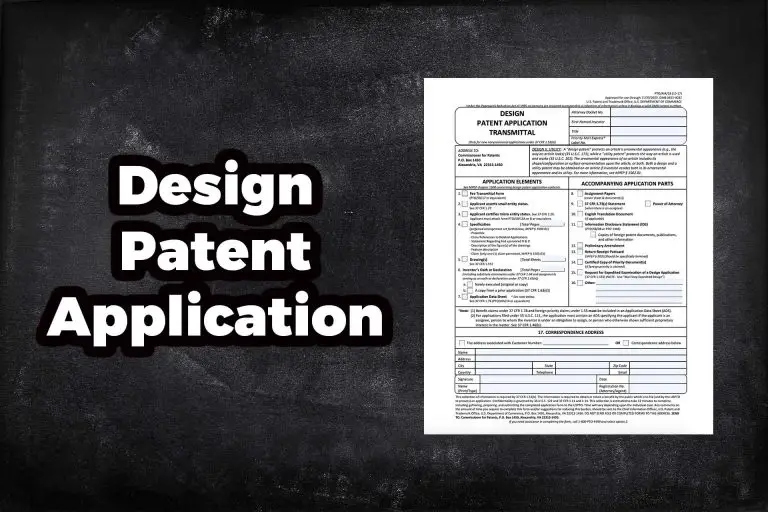What is a Patent Assignment?
Whether you’re curious about assigning a patent to someone else or having a patent assigned to you, you might be wondering what a patent assignment is? Patent law allows patent holders to assign patents to other parties. Patent assignments often take place between an employee and his company, however, it’s not uncommon for a person to assign his interest to a patent to a third party. So, what exactly is a patent assignment? We will cover this below.
What is a Patent Assignment?
A patent assignment is an agreement by the patent holder (assignor) to transfer his interest and ownership of a patent to another party known as the assignee (party receiving patent rights). Once a patent holder executes an assignment agreement assigning his interest in a patent to another party, the assignor loses his rights under the patent. The assignor (transferor) will no longer be able to stop others from using, making, and selling the patent invention. Instead, the assignee gains these rights.
In the United States, patent assignments are very common between an employee and his company because a company or business cannot apply for a patent. An inventor has to apply for a patent and then the inventor then assigns his interest under a patent to the company for which he is working.
An assignment transfers the ownership of the patent from the inventor or employee to the company for which he is working. That said, assignments can also be made by any two parties that agree to transfer ownership of a patent.
So, now we know that a patent holder can transfer his patent rights to a third party, can an inventor assign a pending patent application? Absolutely, yes! An inventor can assign his rights under a pending patent application to another party.
If you’re an inventor and you want to assign your patent to another party, just remember that patent assignments are final. Once an inventor assigns (transfers) his interest in a patent to another party, the assignment (transfer of rights) cannot be undone, it’s final.
What is a Patent Assignor?
A patent assignor is a party that transfers it’s interest and right to the patent to the transferee (assignee) or the party receiving the patent. Once an agreement is executed and recorded with the patent office, the assignee becomes the patent right holder.
What is a Patent Assignee?
A patent assignee is a person to whom the patent rights are transferred to. Said differently, the assignee is the new owner of the patent. An assignee should immediately record an assignment agreement with the patent office to establish his rights as the new patent owner.
Requirements to Execute a Patent Assignment Agreement
For a patent holder to assign (transfer) his interest in a patent to another party, the assignor (person transferring patent rights) must execute a written agreement that includes details, such as the name of the assignor and the assignee, as well as the patent that is to be assigned (transferred) to the assignee.
Once the assignment agreement is executed, it must be filed with the USPTO for the agreement to take effect. Please remember that the agreement needs to be in writing, oral agreements are not sufficient to transfer the rights from the patent holder to the assignee.
The assignment agreement must include the following information:
- The agreement must contain the legal names of both the assignor (person transferring patent rights) and the assignee (person receiving patent rights).
- The agreement must clearly identify the patent by stating the name of the patent, as well as the patent number.
- The terms of the agreement must be included in the assignment agreement.
- Both the assignor(s) and assignee(s) must sign the agreement.
Who Owns the Patent After a Patent Assignment?
Once the assignor and assignee execute an assignment agreement and file the assignment with the USPTO, the assignee owns the patent. As the new patent owner, the assignee will have the right to stops others from using, making, and selling the patented invention for the remaining patent term.
The assignor (person who transferred his rights) loses his rights under the patent and will no longer be able to enforce the patent. Assigning a patent is similar to selling a car and registering the title in someone else’s name. Once the patent is assigned, similar to registering the title of a vehicle in someone else’s name, the new owner is the assignee (person to whom the patent was transferred to). Once the assignment is recorded with the patent office, the records will be updated to show the assignee (new owner) of the patent. This information will then be made available to the public.
Assigning a Patent vs Licensing a Patent
Assigning a patent is much different than licensing a patent. When a patent holder assigns his interest in a patent to another party, he is usually transferring ownership of the patent to the other party. Patent licensing is different in that a license is merely a transfer of the right to use the patent in the manner specified in the licensing agreement. Assignments transfer ownership while a license transfers the right to use the patented invention. That said, if a patent is assigned, the information of the assignor and assignee will become part of the public record. Whereas if an inventor licenses his patent, that information is not typically published to the public.
Does a Patent Assignment Need to be Notarized?
The USPTO does not require patent assignments to be notarized. The patent office only requires that the assignment be executed and signed by both the assignor and the assignee. Once an agreement is executed and signed by the parties, the assignment must be recorded with the patent office.
If the assignee fails to record the assignment, there is nothing to protect the assignee from the assignor assigning the patent to a third party. So, if you’re an assignee, make sure to record your assignment as soon as it’s executed to avoid problems.
Although a patent assignment does not need to be notarized, notarizing it can be beneficial in the event that the previous patent holder claims that he did not make the assignment. It’s an added layer of protection that could prove to be very valuable.
Can Multiple People Own a Patent?
Yes, multiple people can own a patent. For example, if three inventors make a single invention, all three are considered joint inventors and their names should appear on the patent application, as well as the issued patent.
If there are multiple inventors on a patent application, all inventors must execute an assignment agreement to assign each of their interest to the assignee for the assignee to own the entire patent.
For example, if only 1 of 3 inventors assigns his interest, the assignment would be a partial assignment until all 3 inventors each assign (transfer) their interest to the assignee.
Patent Assignment Tips
1) Hire an Attorney to Assist You with Your Patent Assignment
Any individual who’s either an assignor or assignee should hire an attorney to assist with the assignment of a patent. Attorneys will ensure that the assignment agreement complies with the law and contains all of the information that is required for a successful patent assignment. Although it’s not unheard of for parties to execute an assignment agreement on their own, making a mistake could cause legal troubles down the road.
2) Don’t Forget to Record A Patent Assignment
If you have been assigned a patent, don’t forget to record your assignment with the USPTO. We say this because patent assignments don’t go into effect unless the assignment is recorded with the patent office. Recording a patent assignment tells the patent office that you are the new owner of the patent.
If an assignee does not record the assignment with the patent office, it is as if the assignment never took place. Also, if it’s not recorded, the assignor could possibly assign the patent to a third party. So, make sure to record your assignment as quick as possible.
3) Notarize Your Assignment Agreement
It’s good practice to have an assignment agreement notarized. This helps in a situation where the assignor claims that he did not execute the assignment agreement. In the event that an assignor claims he did not execute the assignment agreement, you will have evidence to show otherwise. The burden may shift to the assignor to prove that he did not execute the assignment agreement. So, notarize your agreement, as well as other documents relating to the assignment of a patent.
4) How Much Does it Cost to Record an Assignment with the USPTO?
It’s currently free to record an assignment with the USPTO if a party submits the assignment electronically. However, if a party chooses to record the assignment agreement by paper, there is a $50 fee for the service. So, record your assignment online if you want to avoid paying anything. That said, you may need to publish your assignment in an official gazette, such publication does cost $25.
Patent Assignment
Let’s do a quick recap. A patent assignment is the transfer of ownership of a patent from one party to another. The party transferring its right is known as the assignor and the party receiving the patent rights is known as the assignee.
To assign a patent, both parties must execute a written assignment agreement to reflect the transfer of ownership. Once the parties execute the agreement, they must record it with the patent office to establish the new ownership. If you have any general questions or comments, please feel free to leave them in the comments section below.







